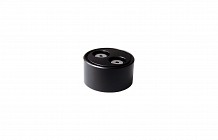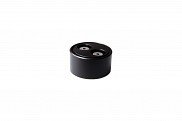
What are the features of an electrochemical, catalytic, infra-red (IR) or photoionization sensor? What features should you pay attention to and what do they imply for a gas detector?
Gas detectors manufactured by Atest Gaz are equipped with appropriate sensors which are selected from a wide range of available solutions depending on the application. The selection of the appropriate sensor is of course influenced by the type of gas detected, the measuring range, but also the environmental conditions in which the device will operate.
The sensors we use in gas sensors are:
- Electrochemical sensors
Detectors equipped with electrochemical sensors are designed to measure and detect the presence of certain substances in gaseous atmospheres at concentrations generally above a single ppm, but in some cases (e.g. oxygen, hydrogen) their concentrations can be tens or hundreds of thousands of ppm. These gases have their specific measuring ranges. Most of the substances detected are mainly volatile inorganic compounds. Some organic compounds, e.g. ethylene, ethylene oxide, can also be detected.
- Catalytic sensors
Detectors equipped with catalytic sensors are designed to measure the concentration and detect the presence of gases and vapors of flammable substances in the air, in the range up to about 100% LEL (lower explosion limit).
- PID photoionization sensors
Detectors equipped with photoionization sensors are designed to measure and detect the presence of gaseous substances whose ionization energy is lower than the lamp energy. They are mainly volatile organic compounds (VOCs).
Examples of VOCs that can be detected by a PID sensor equipped with a lamp with an energy of 10.6 eV:
- aliphatic hydrocarbons - e.g. pentane, octane, hexane,
- aromatic hydrocarbons - e.g. toluene, xylene, benzene,
- alcohols - e.g. ethanol, propanol,
- aldehydes, ketones, esters,
- amines, sulfides,
- others, including aviation fuels, gasoline, and some inorganic compounds.
PID sensors can also be equipped with, for example: a lamp with an energy of 11.7 eV, which, apart from the substances listed above, is able to detect substances such as: methanol, acetylene or formaldehyde. However, this lamp has a very short lifetime (approx. 1 week).
- IR sensors (Infrred)
NDIR (nondispersive infrared sensor), commonly known as IR sensors, measure the concentration of gases capable of absorbing an electromagnetic wave in the infrared range. They are mainly:
- organic compounds, especially methane,
- carbon dioxide,
- others (e.g. carbon monoxide, nitrogen compounds, ammonia, freons, SF6).
These sensors do not detect hydrogen.
We invite you to read the manual, where you can find information about the principle of operation, the impact of environmental conditions and other important aspects affecting the correct operation of the sensor:
User Manual - Sensors used in devices manufactured by Atest Gaz








